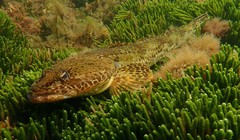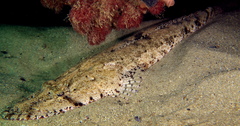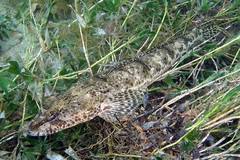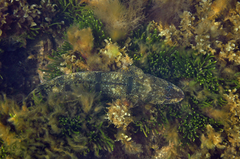A greenish to pale brown flathead with darker bands along the back, a broken mid-lateral stripe and a yellow tail covered in dusky spots. Some individuals have a spotted or marbled pattern. The Rock Flathead has a small, narrow, slightly flattened head, and the upper spine on the corner of the gill cover is longer than the lower spine
This species of flathead is a more slender or narrow bodied species compared to others this together with the head shape and features enable an easy identification of this species.
You can help suppport me bringing this information to you via my Paypal
What habitats does Platycephalus laevigatus live in?
Sand and seagrass beds in shallow bays
What is the distribution of Platycephalus laevigatus?
Southern Australia from NSW to SA including Tasmania
How big does Platycephalus laevigatus grow?
Can grow up to around 50cm more usally up to around 35cm
You can support me by dropping some funds into my Paypal account
This does not mean that it cannot be found locally, just that I have not been able to verify records at the time this species was added to the database.
Disclaimer: A lot of work goes into trying to identify and ensure accurate identifications are made and that the listed Descriptions, Sizes, Habitats and Distribution information is as accurate and valid as possible. Unfortunately, information in this arena is ever changing and as such no guarantee can be offered that it is correct or currently valid as a result the information is provided as a guide, and it is always suggested that you do a little research to ensure you have the latest and most accurate information. View the reference's or bibliography I welcome any feedback and comments on the information provided.






